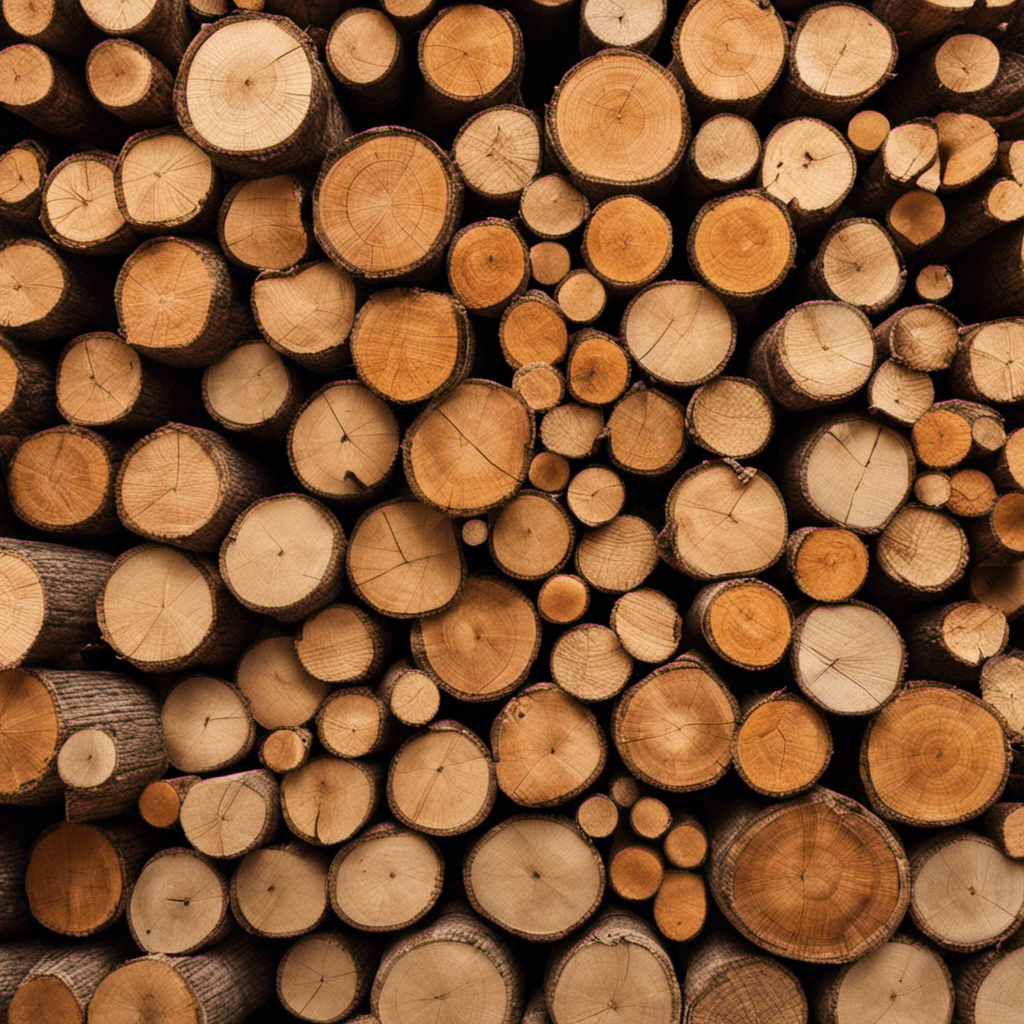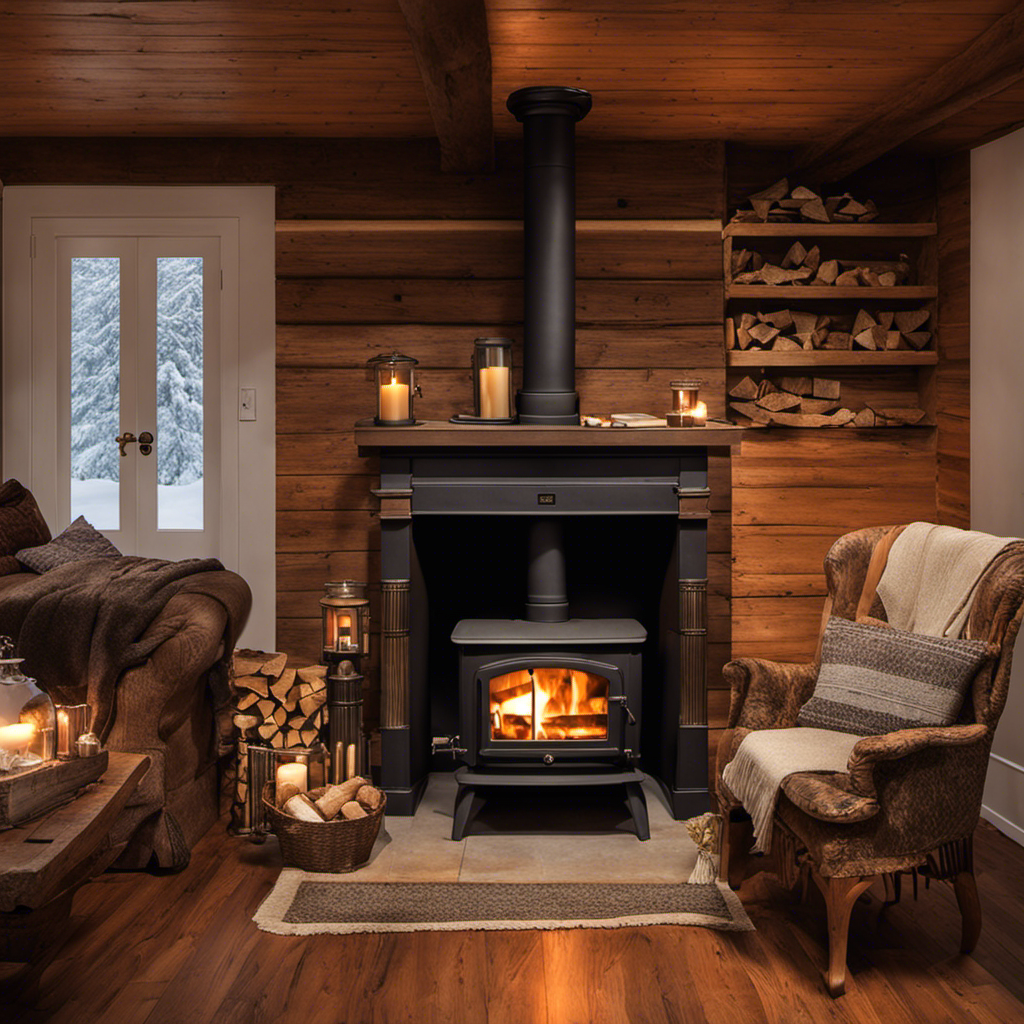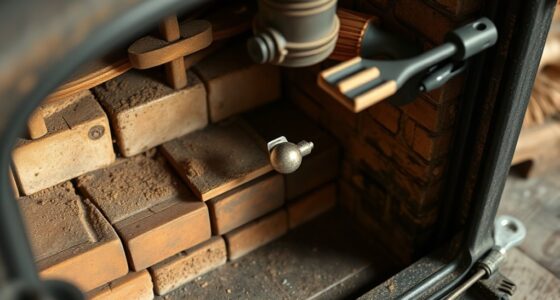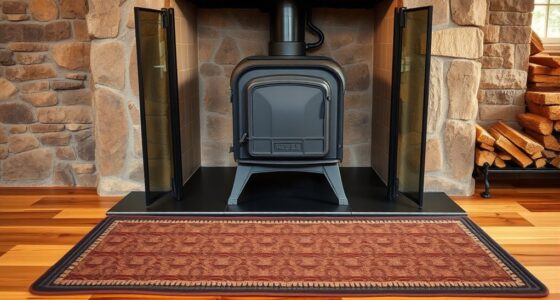Key Takeaways
- The type of wood burned affects creosote buildup, with hardwoods producing less creosote than softwoods.
- The frequency of use impacts cleaning needs, with more frequent use or softer woods potentially requiring more cleaning.
- Regular cleaning maintains efficiency and prevents hazards, and it is recommended to clean a wood stove at least once a year.
- Cleaning the firebox, chimney, and flue thoroughly is essential for maintaining a clean and efficient wood stove.
Factors to Consider When Determining Cleaning Frequency
Signs That Indicate It’s Time to Clean Your Wood Stove
If you’re noticing a buildup of ash or a decrease in heat output, it’s time to give your wood stove a good cleaning. Cleaning your wood stove is essential for maintaining its efficiency and preventing potential fire hazards. When to clean your wood stove depends on how often you use it and the type of wood you burn. As a general rule of thumb, it’s recommended to clean your wood stove at least once a year, preferably before the heating season begins. However, if you use your stove frequently or burn softer woods like pine, you may need to clean it more often. Cleaning your wood stove efficiently involves removing ash and soot from the firebox, chimney, and flue. By keeping your wood stove clean, you can ensure optimal performance and extend its lifespan. As we transition into the subsequent section about how to clean your wood stove, it’s important to understand the step-by-step guide for a thorough cleaning process.Step-By-Step Guide on How to Clean Your Wood Stove
| Supplies Needed | Steps to Follow |
|---|---|
| Ash bucket | 1. Let the stove cool down completely. |
| Metal scoop | 2. Open the stove door and remove the ashes using a metal scoop. |
| Stiff brush | 3. Clean the interior surfaces, including the firebox, grates, and baffle plates, with a stiff brush. |
Maintenance Tips to Keep Your Wood Stove Clean and Efficient
To keep your wood stove running smoothly, it’s important to regularly inspect the chimney and flue for any blockages or buildup. Here are some maintenance tips to help keep your wood stove clean and efficient:- Create a maintenance schedule: Set a regular schedule to inspect and clean your wood stove to prevent any potential issues. This will ensure that your stove operates at its best and reduces the risk of chimney fires.
- Use the right cleaning products: Invest in high-quality cleaning products specifically designed for wood stoves. These products are formulated to effectively remove creosote and soot buildup without damaging the stove or chimney.
- Clean the ash regularly: Remove the ash buildup from the stove at least once a week. Excessive ash can reduce the stove’s efficiency and increase the risk of fire.
- Inspect the gaskets: Check the gaskets around the stove door and replace them if they are worn or damaged. This will help maintain a proper seal and prevent air leaks.
Professional Cleaning Vs. DIY Cleaning: Which Option Is Best for You?
When deciding between professional cleaning and DIY cleaning for your wood stove, you’ll need to consider your budget, time availability, and level of expertise. Both options have their pros and cons, so it’s important to weigh them carefully before making a decision. Professional cleaning offers a thorough and efficient service, ensuring that your wood stove is cleaned to a high standard. They have the expertise and specialized tools to remove stubborn soot and creosote buildup, reducing the risk of chimney fires. However, professional cleaning can be expensive, especially if you require regular maintenance. On the other hand, DIY cleaning is a cost-effective option that allows you to clean your wood stove at your own convenience. It requires some time and effort, but with the right tools and knowledge, you can effectively remove ash, debris, and light soot. However, DIY cleaning may not be as thorough as professional cleaning, and if done incorrectly, it can even cause damage to your wood stove. Ultimately, the choice between professional cleaning and DIY cleaning depends on your individual circumstances. Consider your budget, time availability, and level of expertise to determine which option is best for you.Frequently Asked Questions
Can I Use Regular Household Cleaning Products to Clean My Wood Stove?
I clean my wood stove regularly to maintain its efficiency. Household cleaning products may not be the best option. Instead, consider using alternatives like vinegar or specialized stove cleaners for effective and safe cleaning.Is It Necessary to Clean the Glass Window on My Wood Stove?
Cleaning the glass window on a wood stove is essential for maintaining its efficiency and appearance. Regular cleaning prevents the buildup of soot and allows for a clear view of the flames. However, homemade cleaners may not be as effective as specialized products.How Often Should I Clean the Chimney Connected to My Wood Stove?
Cleaning the chimney connected to my wood stove is essential for proper maintenance. Regular chimney cleaning techniques should be employed to prevent buildup and ensure optimal performance.What Are the Potential Dangers of Not Cleaning My Wood Stove Regularly?
Neglecting wood stove cleaning can lead to potential dangers. Regular maintenance is important to prevent chimney fires, carbon monoxide poisoning, and reduced efficiency. Protect your home and family by cleaning your wood stove regularly.Are There Any Specific Tools or Equipment I Need to Clean My Wood Stove?
When it comes to cleaning my wood stove, having the right tools is key. A brush, ash shovel, and vacuum are essential for removing debris. The cleaning process can be time-consuming, but it’s necessary for optimal performance and safety.How Often Should I Clean My Wood Stove When Installed in an Apartment?
Ensuring your wood stove operates at its best after installing it in an apartment requires routine cleaning. For optimal efficiency and to prevent creosote accumulation, it’s recommended that you clean the stove at least monthly. Consistent upkeep not only prolongs your stove’s lifespan but also minimizes fire risks. Always adhere to the recommendations provided by the manufacturer for correct cleaning methods and safety measures, particularly when handling a wood stove installation in an apartment.
Conclusion
In conclusion, regular cleaning of your wood stove is essential to maintain its efficiency and prevent potential hazards. According to a survey conducted by the National Fire Protection Association, it is recommended to clean your wood stove at least once every year. This statistic paints a vivid picture of the importance of keeping your wood stove clean to ensure it functions properly and reduces the risk of fires. By following the step-by-step guide and implementing the maintenance tips mentioned in this article, you can enjoy a clean and efficient wood stove all year round.Logan’s affair with adventure began in childhood. He hailed from a small town where vast forests bordered one side and endless shores stretched on the other. His days were spent exploring uncharted woods, climbing tall trees, or listening to the tales of old sailors. This early immersion in a world brimming with stories and mysteries became the foundation of his passion for writing.











